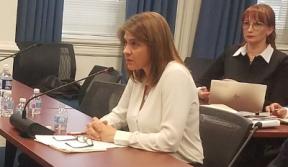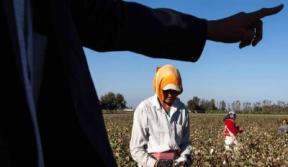Before we can properly assess the democratic nature of certification, we must understand how these organizations are structured. An ideal initiative has a standard setting body and monitoring body, both completely autonomous. The standard setting body is rather self explanatory; it sets the standards that producers must meet in order to qualify for certification. The standards can be broken down into four separate categories: social, ecological, trade, and price. The monitoring body's job is at the ground level, assuring that producing farms are honestly run and meet the rigorous requirements.
Rainforest Alliance v. Fairtrade: How Do Their Structures Stack Up?
Relationships to Corporations
"It's business-driven sustainability."
- Elizabeth Wenner, director of sustainability for Kraft Foods quoted in Rainforest Alliance's 2008 Annual Report
Rainforest Alliance & Kraft
Kraft has been a Rainforest Alliance "partner" since 2003. Kraft is listed in Rainforest Alliance's annual report as a donor that gave between $100,000–$999,999 in 2008 and supported Rainforest Alliance events with more than $10,000 in the same year. Former Kraft executive Annemieke Wijn is a member of the Rainforest Alliance’s Board of Directors.
Such strong financial and structural connections between the corporate purchaser between the standard setting and certification group are a conflict of interest, as Kraft has obvious incentives to meet its publicly declared purchasing commitments at the lowest possible cost. It should be of no surprise that Kraft Foods, Inc. was awarded the Corporate Green Globe Award by the Rainforest Alliance in 2006.
Rainforest Alliance & Chiquita
To recover from a weakening market position, Chiquita began working with Rainforest Alliance in 1992 to promote greater corporate social responsibility. By 2000, all Chiquita bananas grown in Latin American farms featured Rainforest Alliance's happy green frog. This was from all vantage points a good thing, a great step towards minimizing the social injustices that plague large plantation production in the third world. In 2002, with the release of “Tainted Harvest: Child Labor and Obstacles to Organizing on Ecuador’s Banana Plantations” however, the veil was pulled by Humans Rights Watch. The farms investigated in the article, farms certified by Rainforest Alliance, relied on child labor, violated basic labor rights and suppressed attempts at unionization. In response, Rainforest Alliance went back and re-inspected the plantations in 2003, but maintained all their certifications.
Standards and Monitoring
Rainforest Alliance sets and enforces its own standard in a closed system. It is the best-funded and largest member of its Sustainable Agriculture Network (SAN). As the SAN secretariate, Rainforest Alliance coordinates the development and review of SAN standards. What about the monitoring body that investigates the producer's ability to comply with these standards? Well, local certifiers are hired directly by SAN, and certification costs are reduced for farmers who pay travel expenses, lodging, and meals for certifiers.
This is in stark contrast to Fair Trade certifiers including the Institute for Marketing Ecology (Fair for Life) and the Fairtrade Labelling Organization International (TransFair) that follow the requirements of ISO 65, the international quality norm for certification bodies.
Viewed in the most favorable of lights, Rainforest Alliance's organizational structure does not seem capable the daunting task of curing labor exploitation on large plantations. Structure aside, assuming arguendo that Rainforest Alliance has the ability to enforce their standards, how do those standards compare to Fair Trade?
Fair Trade has standards for farmers' organizations and for hired labor. Small organizations must establish co-ops, ensuring democratic decision making. Farms with hired labor must allow workers to unionize and establishes a baseline premium 'living wage', which more than merely maintaining the local legal floor, but allows for growth and future independence. Most importantly, farm workers are an integral part in establishing Fair Trade standards.
Rainforest Alliance's standard creation process does not involve the cooperation of farm workers, and are understandably much more lax. RA sets no baseline premium for wages, and at best maintains the low bar set by local governments. In RA's list of criteria, only those considered 'critical' (of which freedom of association is not one of them) must the producer comply, and then by only 50%. The most surprising element of RA standards, given their fundamentally weaker nature to begin, is that a purchaser's product need only contain 30% certified content to be awarded the green frog label. Given all these percentages, a 'non-critical' criteria can be ignored, and final certified product could contain 30% materials that are 50% child labor free. (For a more detailed investigation into RA's deficient standards, follow this link to a previous OCA article.)
For a final difference, Rainforest Alliance does not charge corporate purchasers for the use of their labels (ostensibly not counting the likely donation requirement), while Fair Trade has a 2% fee. The fee goes directly back to community development projects, ensuring that conditions and opportunities for farm workers improve with every shipment.
Sources:
Examining the Rainforest Alliance’s Agricultural Certification Robustness, by Feliz Ventura, Graduate School of International Relations and Pacific Studies, University of California, San Diego
Regulating sustainability in the coffee sector: A comparative analysis of third-party environmental and social certification initiatives, Laura T. Raynolds, Douglas Murray and Andrew Heller
Sociology Department, Colorado State University, Clark Building, Fort Collins, Colorado, USA
Standards and Sustainability in the Coffee Sector, By Stefano Ponte, Senior Researcher, Danish Institute for International Studies


Comments
re: Fair Expectations: Rainforest Alliance v. Fairtrade
Thanks for the article! I have often wondered about the legitimacy of such labels. It seems to me that the surest way to guarantee that these types of certifications are effective is by setting up independent monitors that can make sure they are actually doing their job and delivering products produced by workers who enjoy all the basic rights to which they are entitled. I was pleased to see that workers are involved in the process for setting standards with Fair Trade, and would be curious to know the logistics of this participation.
re: Fair Expectations: Rainforest Alliance v. Fairtrade
Many thanks for the clarification. I also had wondered about the accuracy of these "certifications". In a related area of concern, that of eco-conscious lodging, while some "green-washing" does take place, there are increasing sources for reliable verification with the advent of websites specific to that purpose.
One such dedicated "Green" web site, iStayGreen.org, is helping to make environmentally friendly lodging easy to find and book. iStayGreen.org is currently the most frequented online booking site for "Green" lodging (http://www.istaygreen.org). Over 3,500 of the properties listed are environmentally friendly and have been awarded the Green Eco-Leaf Rating.
The eco initiatives of the property are listed clearly, and users are encouraged to contribute "Green" Reviews and environmentally rate the hotels they visit.
It's like Tripadvisor - Facebook - Travelocity all together in one site for the environmentally conscious traveler.
re: Fair Expectations: Rainforest Alliance v. Fairtrade
Hi, I work for Unilever, a multinational company that works with both Fairtrade and Rainforest Alliance. I have been closely involved in the launch of some of our products that were certified by either FT or RA. I am writing this in a private capcity though.
This article is not helpful since it is badly researched and biased. It contains several factual errors about both FT and RA.
Justin failed to mention that both FT and RA are members of ISEAL-( http://www.isealalliance.org ) which is the de facto gold standard for certification schemes. ISEAL has strict guidelines for the creation fo standards, using stakeholder involvement.
FT and RA have different objectives. Both schemes have their strengths and weaknesses. They’re complimentary, and both further sustainable development, but in different ways. To say one is better than the other is like saying apples are better than oranges.
Unfortunately some people see certification schemes as a zero-sum game- if RA wins then FT loses. This is doing a disservice to both schemes. The reality is that we shouldn’t focus on the difference between RA and FT. We should focus on the difference between certified and non-certified goods. If only one consumer buys a non-certified product instead of an RA certified product as a result of this article then that is a loss for sustainable development as a whole.
And I would have said exactly the same thing if the article had been written pro RA and contra FT.
re: Fair Expectations: Rainforest Alliance v. Fairtrade
Here is a response from Rainforest Alliance: http://organicconsumers.org/forum/index.php?showtopic=2846